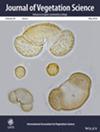Relationship of Exotic Species Establishment to Environmental Site Characteristics in Plant Communities of the Piedmont of Southeastern USA
Abstract
Questions
Although communities may be differentially susceptible to establishment of exotics, broad predictions of community invasibility remain elusive. Here we have addressed which abiotic and biotic site characteristics were most strongly related to exotic plant cover in plant communities of the southeastern U.S. Piedmont and how effective these site characteristics were in distinguishing communities with successful persistence of exotic plant species from those without exotic plant species.
Location
Piedmont physiographic region, North Carolina, South Carolina, and Virginia, USA.
Methods
We analyzed 28 unique biotic and abiotic variables potentially associated with exotic species establishment using a dataset of 1363 vegetation plots. We developed logistic and binomial regressions to analyze exotic species cover as a function of predictor variables and a classification and regression tree to determine the relationship between exotic species establishment and community characteristics.
Results
Many soil characteristics (pH, exchange capacity, base saturation, and multiple nutrient variables) were positively and significantly related to exotic species establishment, while elevation and soil iron were negatively related. Many other variables were inconsistently related to exotic cover in these communities. Finally, the classification and regression tree analysis indicated that environmental and community conditions can be better used to explain where establishment was unlikely than where it was likely to occur. However, various combinations of wetland species cover, calcium, phosphorus, stem density, slope, and soil iron were most effective in predicting sites with establishment.
Conclusions
The significant positive relationship between exotic species cover and soil nutrients suggests that exotic species often succeed in fertile sites, and the relationship with wetland species suggests the importance of soil moisture, nutrient deposition, and propagule dissemination by water. Although many clues exist as to the potential for exotic species persistence, these factors do not fully explain the complex community interactions driving, and being driven by, plant invasions, including the potential lag in invasion timelines.

 求助内容:
求助内容: 应助结果提醒方式:
应助结果提醒方式:


